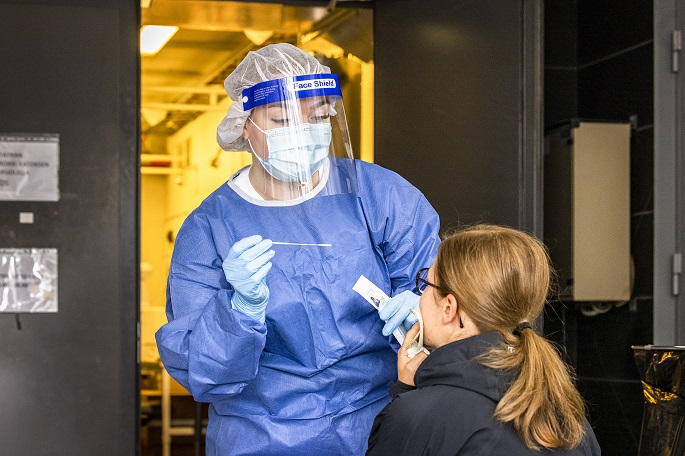Stern measures retard coronavirus spread
Published : 02 Apr 2021, 01:06
Slightly fewer new COVID-19 cases were reported in Finland between 22 and 28 March than in the first weeks of the month, said the Ministry of Social Affairs and Health and the Finnish Institute for Health and Welfare (THL) in a press release on Thursday.
The current restrictions and recommendations, and the closure of businesses serving food or beverages seem to have decelerated the spread of the epidemic. It takes some time for the restrictive measures to take effect and the number of new cases remains high.
Therefore, it is possible for the epidemic to take a rapid turn for the worse.
There are major regional differences in the development of the epidemic. South and southwest Finland are the worst-hit areas. COVID-19 incidence remains very high in the Hospital District of Helsinki and Uusimaa and the Hospital District of Southwest Finland.
The incidence is the lowest in the hospital districts of South Ostrobothnia, Central Ostrobothnia, North Ostrobothnia, Lapland, Vaasa, and Kainuu.
Between 22 and 28 March, about 4,150 new cases were reported to the communicable diseases register, showing a decrease of more than 500 cases from the corresponding figure of the previous week. The incidence of new cases was 75 per 100,000 inhabitants, while in the previous week it was 85.
The total number of new cases in the last two-week period was about 8,850, showing a fall of more than 500 cases than that in the preceding two-week period.
The incidence of new cases was 160 per 100,000 inhabitants, while in the preceding two weeks, it was 170. Currently, the estimated basic reproduction number is 0.90–1.05, with a 90 per cent probability. This is slightly less than the level in the week before.
More than 135,000 COVID-19 tests were taken between 22 and 28 March, showing a slight decrease in the testing numbers of earlier in the month. Positive results accounted for 3.1 per cent of all tests. The percentage of positive test results was high, more than three per cent, throughout March.


